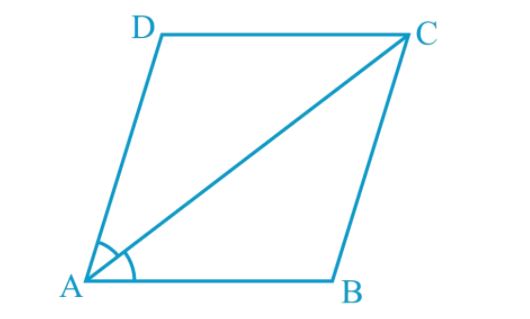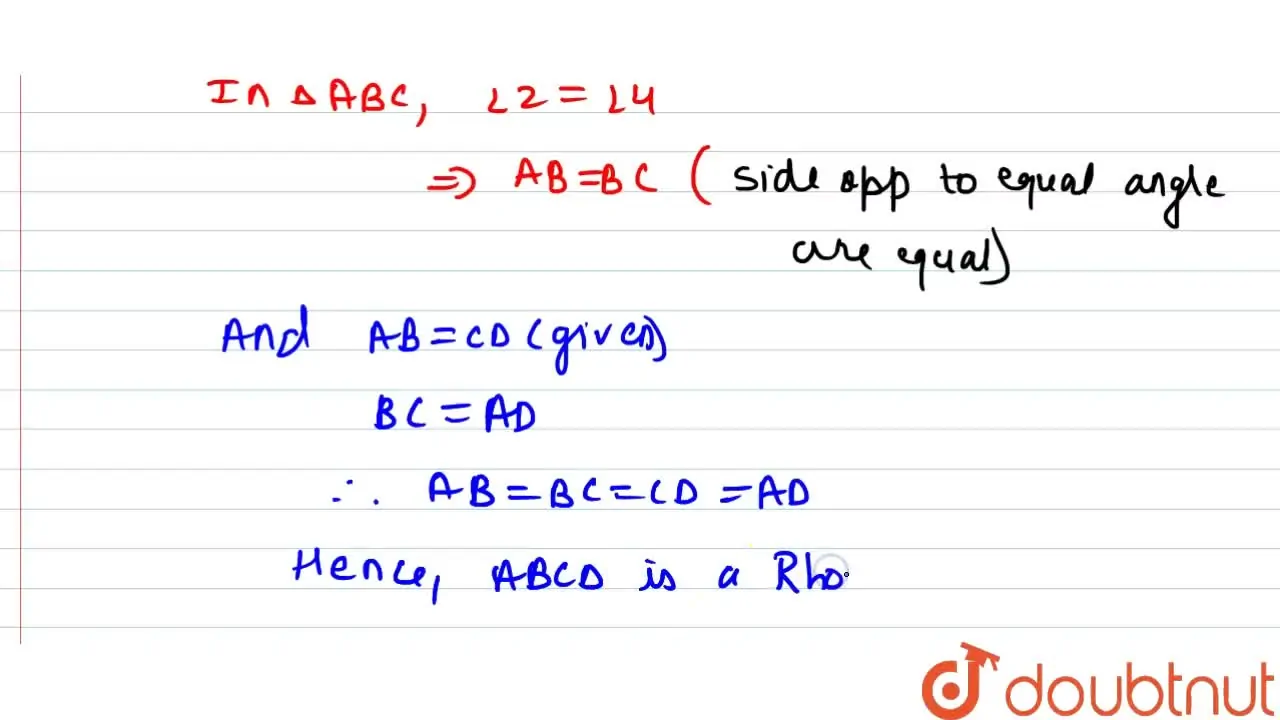Diagonal AC of a parallelogram ABCD bisects ∠A. Show that
(i) it bisects ∠C also,
(ii) ABCD is a rhombus.

Given: The diagonal AC of a parallelogram ABCD bisects ∠A.
We can use alternate interior angles property to show that the diagonal AC bisects ∠C and by showing all sides are equal, it can be proved ABCD is a rhombus.
i) ABCD is a parallelogram.
∠DAC=∠BCA (Alternate interior angles) ....................(1)
∠BAC=∠DCA (Alternate interior angles) ....................(2)
However, it is given that AC bisects ∠A.
∠DAC=∠BAC ....................(3)
From equations (1), (2), and (3), we obtain
∠DCA=∠BAC=∠DAC=∠BCA ....................(4)
Thus, ∠DCA=∠BCA
Hence, AC bisects ∠C.
ii) From Equation (4), we obtain
∠DAC=∠DCA
DA=DC (Side opposite to equal angles are equal)
However, DA=BC and AB=CD (Opposite sides of a parallelogram are equal)
Thus, AB=BC=CD=DA
Hence, ABCD is a rhombus.

Related Playlists
- BOOK - NCERTCHAPTER - QUADRILATERALSEXERCISE - SOLVED EXAMPLES8videos
QUADRILATERALS
- BOOK - NCERTCHAPTER - QUADRILATERALSEXERCISE - SOLVED EXAMPLES8videos
QUADRILATERALS
- BOOK - NCERTCHAPTER - PROBABILITYEXERCISE - SOLVED EXAMPLES10videos
PROBABILITY
- BOOK - NCERTCHAPTER - STATISTICSEXERCISE - EXERCISE 14.12videos
STATISTICS
Similar Questions
Diagonal AC of a paraleligram ABCD bisects ∠A (sec figure). Show that:
(i) it bisects ∠C also (ii) ABCD is a rhombus.
 View Solution
View SolutionThe diagonals of a parallelogram bisect each other.
View SolutionThe diagonals of a parallelogram bisect each other.
View Solutionif diagonals of a parallelogram bisect each other,prove that its a rhombus
View SolutionIn a parallelogram ABCD, the bisector of ∠A also bisects BC at X. prove that AD=2AB.
View SolutionIn a parallelogram ABCD, the bisector of ∠A also bisects BC at X Find AB:AD
View SolutionIn a parallelogram ABCD, the bisector of anl≥A also bisects BC at E, find the AD.
View SolutionIf ACandBD are diagonals of a parellelogram ABCD, show that
View SolutionThe diagonals of parallelogram bisect each other ( True/ False)
View SolutionA diagonal of a parallelogram bisects an angle. Will it also bisect the other angle? Give reason.
View Solution


